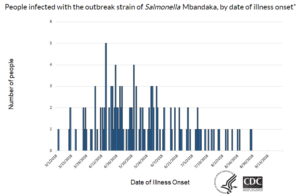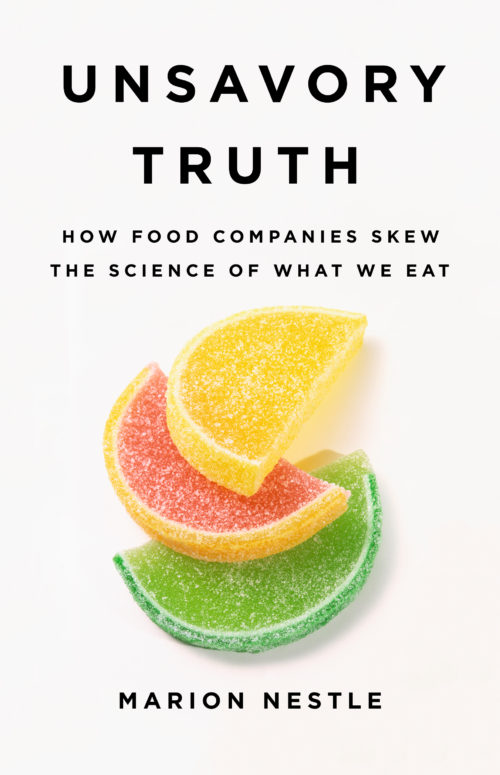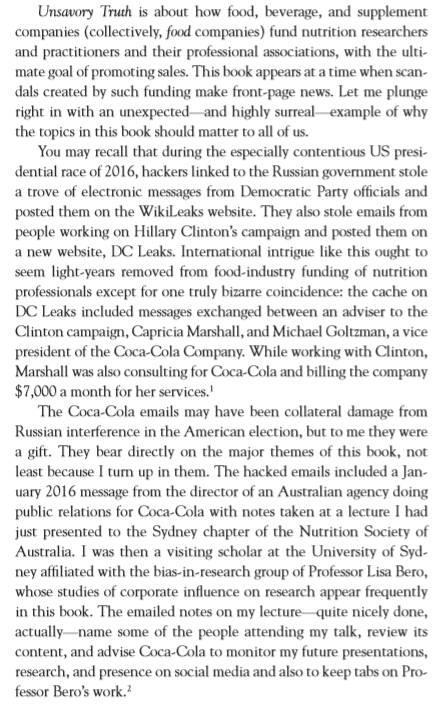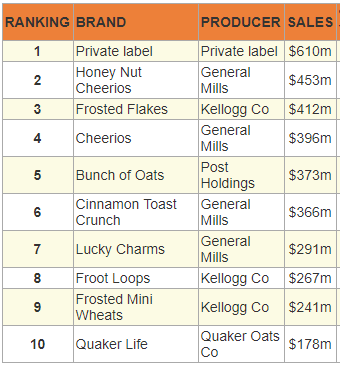Who is suing whom? Food politics lawsuits
FoodNavigator-USA has collected its recent articles on food industry lawsuits. As it puts it,
There have been hundreds of class action lawsuits directed against food and beverage companies in the past five years, spanning everything from added sugar, ‘natural’ and ‘healthy’ claims, to glyphosate residues, and alkaline water claims. We take a look at some high profile cases, some emerging hot topics from Non GMO claims to a new wave of kombucha lawsuits, and what’s coming up from the FDA, from plant-based ‘milk’ labeling guidance to a fresh look at ‘healthy’ and ‘natural’ labeling.
I’ve organized these into categories.
GMOs
- And now the food lawsuits… General Mills sued over glyphosate residue post Monsanto $289m verdict: Monsanto has just been ordered to pay $289m in damages to a man who alleged its glyphosate-based herbicide caused his cancer (a ruling it is appealing). But what, if anything, does this verdict mean for food companies manufacturing products containing trace levels of glyphosate?.. Read
- Nestlé USA lawsuit highlights confusion over Non-GMO claims, say attorneys: A lawsuit alleging that Nestlé USA is misleading shoppers with its ‘No GMO Ingredients’ seal is unlikely to make much progress, predict legal experts, but it does highlight the confusion surrounding Non-GMO claims given that the standards underpinning them can differ from one product to another… Read
- The Non-GMO Project may emerge as the big winner from federal GMO labeling legislation: The Non-GMO Project will “only become more relevant” as mandatory GMO labeling kicks in, in part because its scope could be so narrow that consumers will not simply be able to assume that anything without a bioengineered label is automatically Non-GMO, says executive director Megan Westgate… Read
Warnings about chemicals in foods
- ‘Significant increase’ in Prop 65 notices over lead, acrylamide, and cadmium in 2017/18, says Perkins Coie: There has been a significant increase in food and beverage Prop 65 actions in the past five years, with particularly strong growth in notices relating to lead, acrylamide and cadmium, according to new data compiled by attorneys at Perkins Coie… Read
- Amended Prop 65 regulations likely to prompt a significant uptick in litigation, predict attorneys: Amendments to Prop 65 – which requires firms selling products in California to provide warnings if their products expose consumers to 900+ chemicals linked to cancer or reproductive toxicity – will likely trigger a sharp rise in litigation as manufacturers struggle to get to grips with the new rules, predict attorneys… Read
Compliance with labeling and health claims requirements
- RXBAR sued over minimalist labels, ingredients declaration; but case is a stretch, say legal experts: ‘We tell you what’s on the inside on the outside’ protein bar brand RXBAR has been hit with a proposed class action lawsuit* by the same law firms challenging the minimalist ingredients declarations of fellow bar brand That’s It.**.. Read
- Halo Top routinely under-fills its pints, alleges lawsuit, ‘dramatically so, at times…’: A month after being hit with a lawsuit alleging it made false and misleading representations about its light ice cream, Halo Top has been targeted again, this time with a proposed class action alleging it routinely under-fills its pints, “and has been doing this for years.”.. Read
- ‘No reliable scientific evidence’ supports Trader Joe’s alkaline water claims, alleges lawsuit: “There is no greater benefit to ingesting Trader Joe’s alkaline water than ingesting an equivalent bottled water or tap water,” argues a lawsuit alleging Trader Joe’s is duping shoppers into paying over the odds for the water, although legal experts predict that proving Trader Joe’s is making false implied health benefit claims will be “close to impossible.”.. Read
- Plant-based ‘milk’ row heats up as FDA commissioner says ‘public health concerns’ inform the agency’s renewed interest in dairy standards of identity: The war of words over labeling conventions for plant-based ‘milk’ intensified this week as FDA commissioner Dr Scott Gottlieb indicated that a “a new compliance policy” may be on the cards as the agency hosted a public meeting on its nutrition innovation strategy… Read
- Do consumers expect kombucha to contain live organisms? Court gives green light to lawsuit: Do consumers expect products labeled as ‘kombucha’ to contain live organisms, even if they don’t make any claims to this effect? Maybe, according to a court filing in a case that could have broader ramifications for the burgeoning category going forward, say attorneys… Read
- How much sugar do consumers expect in a ‘lightly sweetened’ cereal? Judge certifies classes in Kellogg added sugar case: If up to 40% of the calories in breakfast cereals are from added sugar, and brands describe them as ‘lightly sweetened,’ are they misleading shoppers? Perhaps, says a federal judge who has just certified three classes of consumers in a false advertising lawsuit vs Kellogg, which is now heading into mediation… Read
- Tofurky CEO: It’s not the role of lawmakers to choose winners or losers in any given industry: As long as protein products are safe and shoppers are not being misled, it’s not the role of lawmakers to write new labeling laws favoring one production method over another, says the CEO of plant-based meat brand Tofurky, which is challenging a Missouri law* limiting the term ‘meat’ to slaughtered livestock or poultry… Read
- Clif Bar fires back at ‘absurd’ lawsuit: Consumers expect energy bars to contain sugar: Clif Bar has hit back at allegations made in a recent lawsuit* that it is duping consumers by presenting bars that are “loaded with sugar” as wholesome and nutritious, and urged the judge to toss the “absurd” and “implausible” case… Read
And here’s a more recent one from CBS News:
-
LaCroix ingredients: Lawsuit alleges “all natural” claim is false: LaCroix sparkling water is facing a lawsuit alleging its claims of “all natural” and “100 percent natural” are misleading because…”Testing reveals that LaCroix contains a number of artificial ingredients, including linalool, which is used in cockroach insecticide.”
And here’s one more from CSPI (an October 24 addition):
- CSPI sues Jamba Juice: its juices, CSPI charges, are made from cheap concentrates as well as fresh fruit.
Addition, December 11
- Article about the five most active lawsuits


 The Food Safety and Modernization Act set rules governing the safe production of foods. Clearly, some companies, this one apparently, did not bother to follow them.
The Food Safety and Modernization Act set rules governing the safe production of foods. Clearly, some companies, this one apparently, did not bother to follow them.




